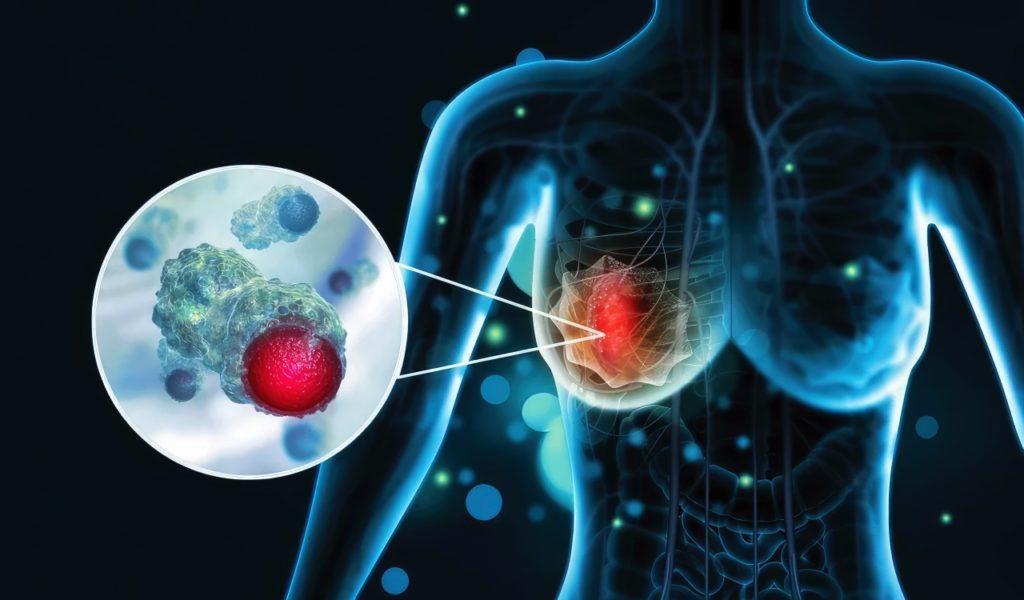Many people who have gotten breast cancer might have seen tumors or even lumps of some kind not just in their breasts, but also around the spine. It’s pretty odd, as very few cancers seem to act like this. One would assume breast cancer would spread cancer throughout the lungs, even to the heart.
Yet now a newfound type of stem cell can drive cancer cells to bones in the vertebrae. Pathologist Matthew Greenblatt of Weill Cornell Medicine and his colleagues reported their findings in last month’s issue of Nature.
By working with these stem cells, the team was able to somewhat indirectly find out the mystery behind metastasis. Which is the development of secondary, malignant growths quite a distance from the original or primary site of a cancer.
It’s odd how some cancers are able to journey through our bloodstream and then show up in the spinal region like this. This is why Greenblatt and his team seem to have made such a useful discovery.
In people with metastatic breast cancer, roughly 70% of these people experience bone cancer of some type. Of the bones in the skeleton, cancer cells seem to love seeking out vertebrae. For those patients, Greenblatt claimed:
“Spine metastases are one of the most common complications and one of the most dreaded.”
Tumors In The Spine

These tumors find their way to the spine and can begin to crush the spinal cord. Of course, the spinal region is pretty crucial to the human body. It houses numerous nerve bundles that can be incredibly important to bodily sensations and even movement.
Damage to this area can cause people to lose the ability to walk, control their bladder/bowels, and much more. It can also sadly cause much shorter lifespans too.
Of course, doctors have known for several decades that some cancers seem to love seeking out the spine. The problem was that, according to Greenblatt, no one seemed to have a good explanation for why. There have been theories though.
One idea referenced back in 1940 proposed that actions like coughing jolts blood off course, and can somehow send cancerous cells to the vertebrae. As weird as that idea sounds, many still believe this is one of the most viable reasons for it. In fact, many learned this in medical school.
Greenblatt and his team felt this just did not make sense scientifically speaking. However, what did end up making sense was stem cells.
Stem Cells Were The Secret

The research team had an idea that stem cells inside vertebral bones differed from those in other areas of the skeleton. Such as the long bones found in the arms and legs. When they studied this in the lab, that is exactly what they found.
Greenblatt’s team managed to pull out a population of stem cells from mice vertebrae distinctly unlike any collected from long bones. The new stem cells switched on a separate set of genes and behaved differently in experiments, according to the researchers.
Until this discovery, scientists simply did not know that these two types of bones held their own distinct populations of stem cells. The team’s discovery raised the possibility that spinal stem cells might actually even play a role in spinal disease.
During one key experiment for the team, they transplanted spinal stem cells into one hind leg of mice and long bone stem cells into another. Each transplant formed miniature bones (or organoids) in their bodies.
A tiny vertebrae was formed on the right, for example, and a bit of long bone formed on the left.
The team then injected breast cancer cells into the mice and watched where they ended up. The cells traveled to the mini-vertebrae almost twice as often as they did to the lone bone. This made the team feel that the vertebrae had some sort of cancer lure to them.
The tumor cells preferentially go to the vertebrae organoid and not to the organoid of the long bone here.
Key Protein Discovered

These newly identified spinal stem cells, which are found in both mice & humans, secrete a protein called MFGE8. This protein acts as a tumor attractant according to the team. That is what seems to be drawing cancer cells to spinal tissue.
The protein might not be the only reason for this. However, according to Greenblatt, it’s still “an important one in driving tumor cells to the spine.”
Of course, it’s possible that blocking MFGE8 could prevent or even treat spinal metastasis. This discovery certainly makes that worthy of investigation and study. However, it might be too early to know exactly what the therapeutic implications could be here.
Greenblatt and his team are now exploring if new stem cells can recruit other types of tumor cells to the spine. For example, when prostate cancer spreads, it also travels to the vertebrae over other types of bone.
The team is curious about whether our hones might be hiding anything else, which makes sense. After this discovery, how could you not feel there is something being hidden? That just means we need to do more studies, right?
References:
Newfound Stem Cell Might Explain How Breast Cancer Spreads to the Spine
Duke Researchers Find Breast Cancer Cells Enter the Leptomeninges Via Bone Marrow and Emissary Veins